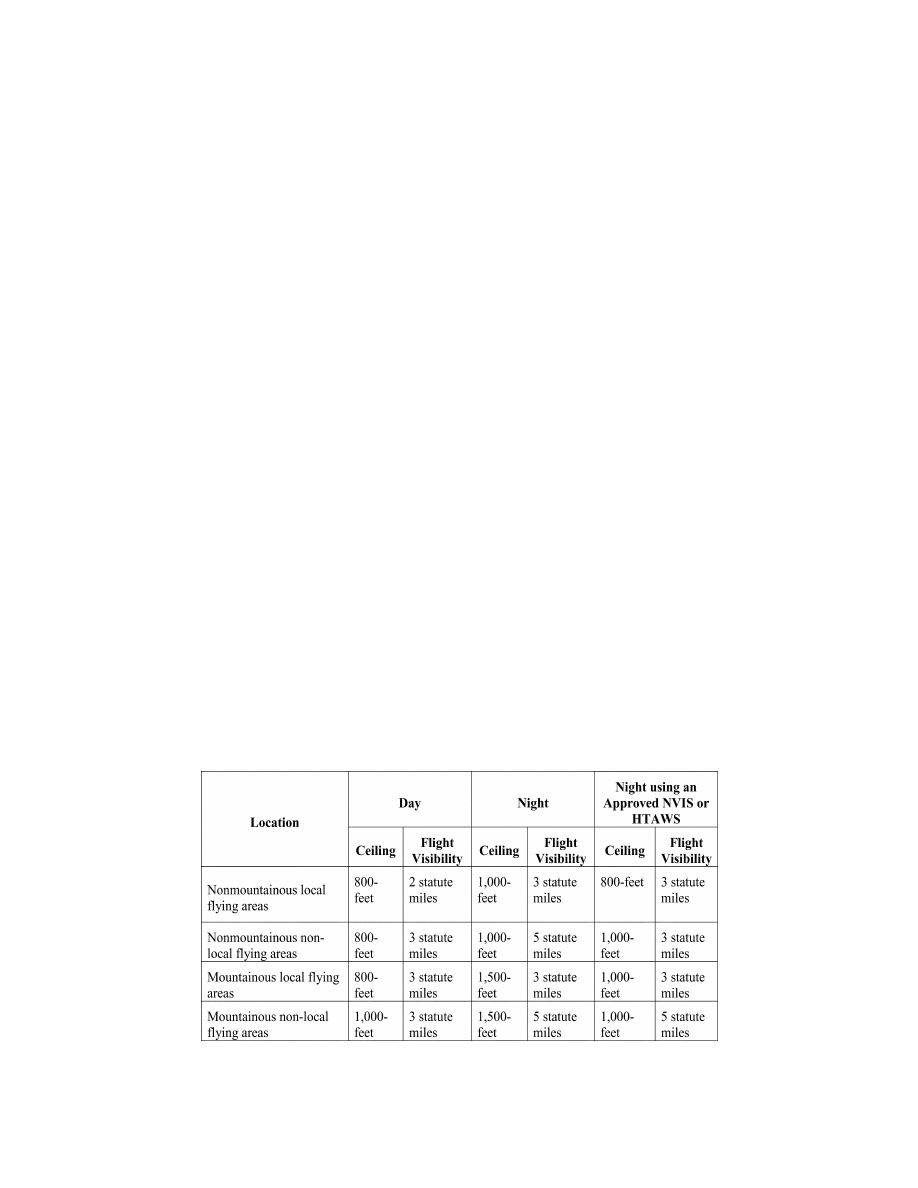
520
14 CFR Ch. I (1–1–24 Edition)
§ 135.601
(d)
New hire or new job function.
Each
certificate holder using a person under
the exception in § 135.505(b) must main-
tain a record for that person. The
records must be available upon request
at the location where the trained per-
son performs or directly supervises the
job function specified in § 135.501(a).
Records may be maintained electroni-
cally and provided on location elec-
tronically. The record must include the
following:
(1) A signed statement from an au-
thorized representative of the certifi-
cate holder authorizing the use of the
person in accordance with the excep-
tion;
(2) The date of hire or change in job
function;
(3) The person’s name and assigned
job function;
(4) The name of the supervisor of the
job function; and
(5) The date the person is to complete
hazardous materials training in accord-
ance with Appendix O of part 121 of this
chapter.
Subpart L—Helicopter Air Ambu-
lance Equipment, Operations,
and Training Requirements
S
OURCE
: Docket No. FAA–2010–0982, 79 FR
9975, Feb. 21, 2014, unless otherwise noted.
§ 135.601 Applicability and definitions.
(a)
Applicability.
This subpart pre-
scribes the requirements applicable to
each certificate holder conducting heli-
copter air ambulance operations.
(b)
Definitions.
For purposes of this
subpart, the following definitions
apply:
(1)
Helicopter air ambulance operation
means a flight, or sequence of flights,
with a patient or medical personnel on
board, for the purpose of medical trans-
portation, by a part 135 certificate
holder authorized by the Administrator
to conduct helicopter air ambulance
operations. A helicopter air ambulance
operation includes, but is not limited
to—
(i) Flights conducted to position the
helicopter at the site at which a pa-
tient or donor organ will be picked up.
(ii) Flights conducted to reposition
the helicopter after completing the pa-
tient, or donor organ transport.
(iii) Flights initiated for the trans-
port of a patient or donor organ that
are terminated due to weather or other
reasons.
(2)
Medical personnel
means a person
or persons with medical training, in-
cluding but not limited to flight physi-
cians, flight nurses, or flight para-
medics, who are carried aboard a heli-
copter during helicopter air ambulance
operations in order to provide medical
care.
(3)
Mountainous
means designated
mountainous areas as listed in part 95
of this chapter.
(4)
Nonmountainous
means areas
other than mountainous areas as listed
in part 95 of this chapter.
§ 135.603 Pilot-in-command instrument
qualifications.
After April 24, 2017, no certificate
holder may use, nor may any person
serve as, a pilot in command of a heli-
copter air ambulance operation unless
that person meets the requirements of
§ 135.243 and holds a helicopter instru-
ment rating or an airline transport
pilot certificate with a category and
class rating for that aircraft, that is
not limited to VFR.
§ 135.605 Helicopter terrain awareness
and warning system (HTAWS).
(a) After April 24, 2017, no person may
operate a helicopter in helicopter air
ambulance operations unless that heli-
copter is equipped with a helicopter
terrain awareness and warning system
(HTAWS) that meets the requirements
in TSO–C194 and Section 2 of RTCA
DO–309.
(b) The certificate holder’s Rotor-
craft Flight Manual must contain ap-
propriate procedures for—
(1) The use of the HTAWS; and
(2) Proper flight crew response to
HTAWS audio and visual warnings.
(c) Certificate holders with HTAWS
required by this section with an ap-
proved deviation under § 21.618 of this
chapter are in compliance with this
section.
(d) The standards required in this
section are incorporated by reference
into this section with the approval of
the Director of the Federal Register
under 5 U.S.C. 552(a) and 1 CFR part 51.
To enforce any edition other than that
